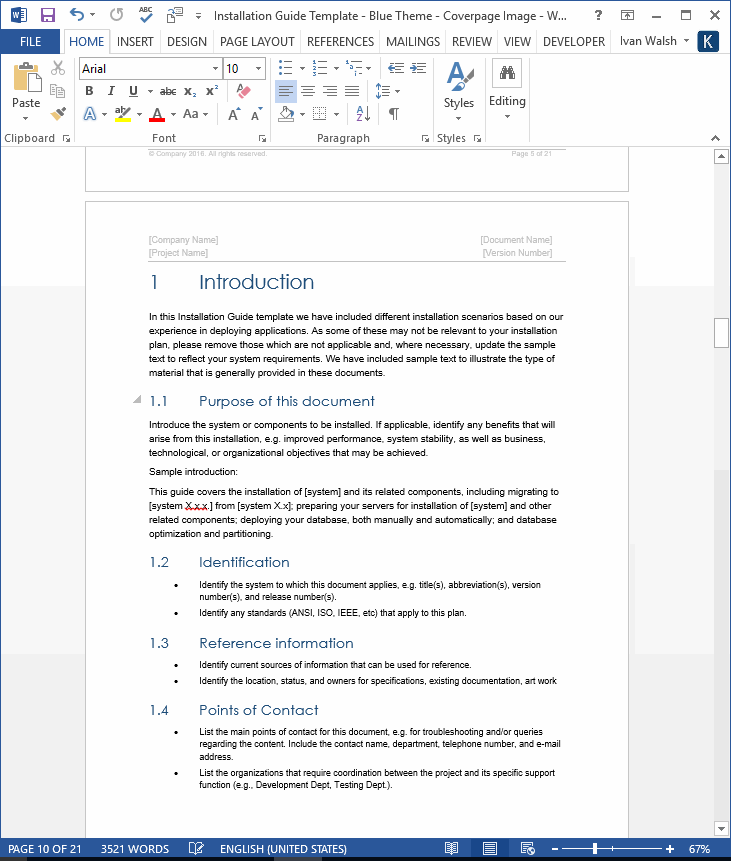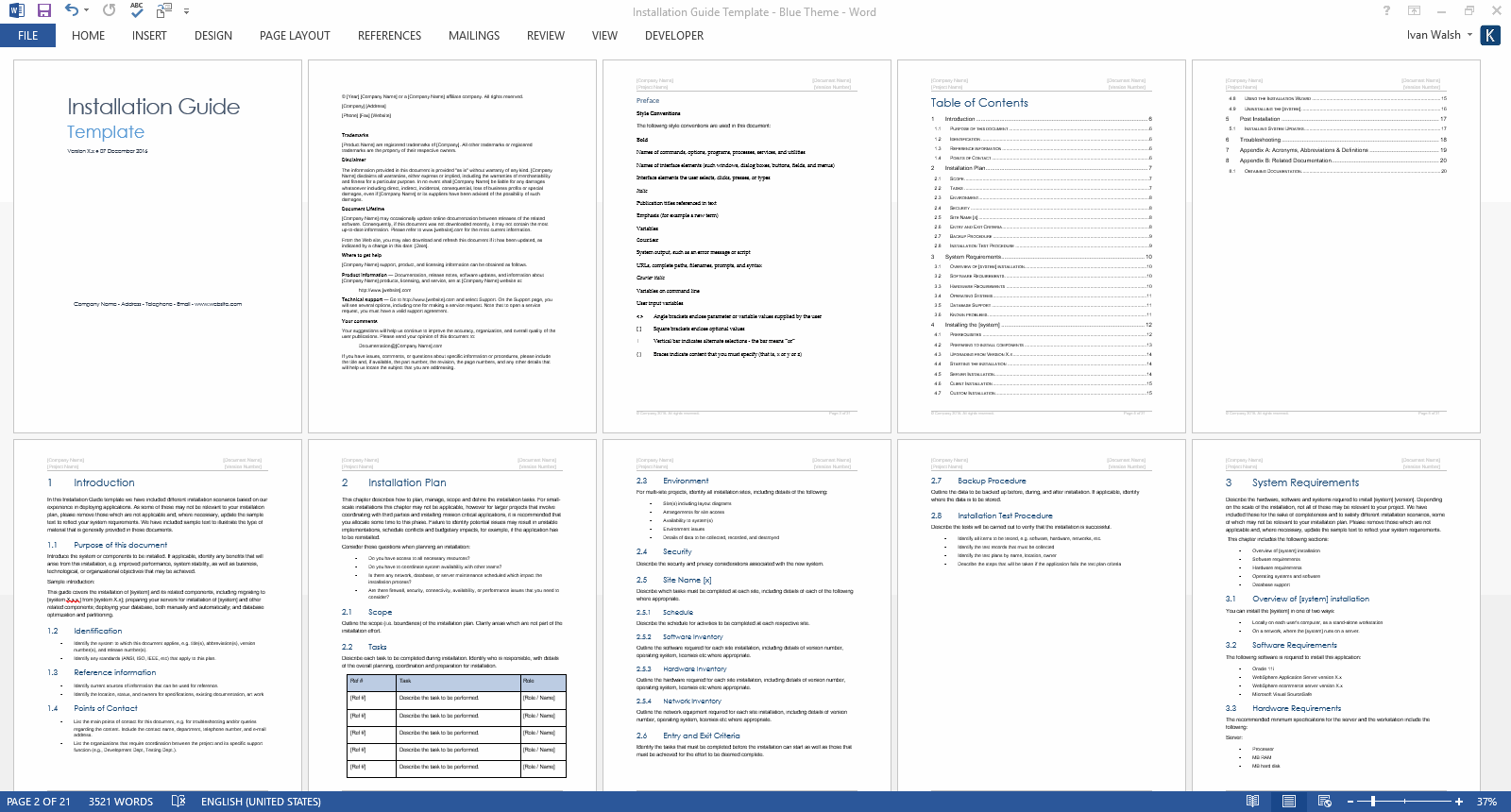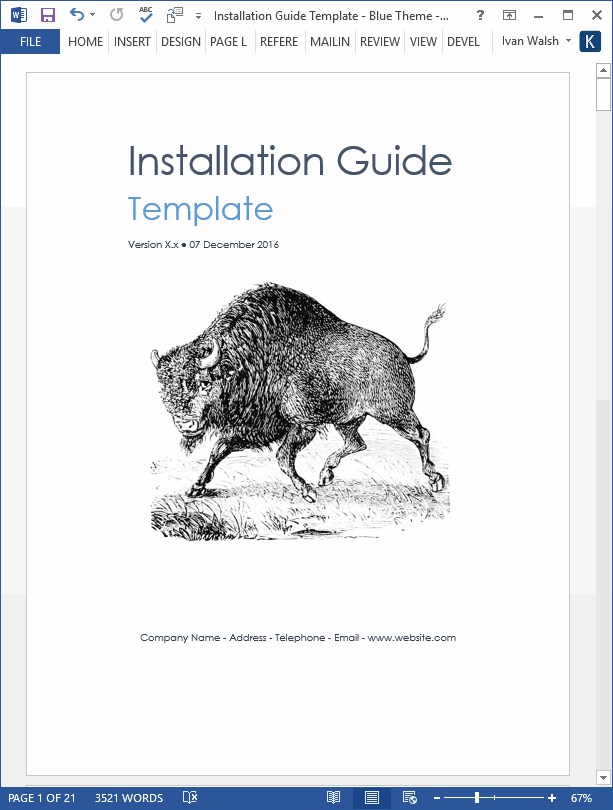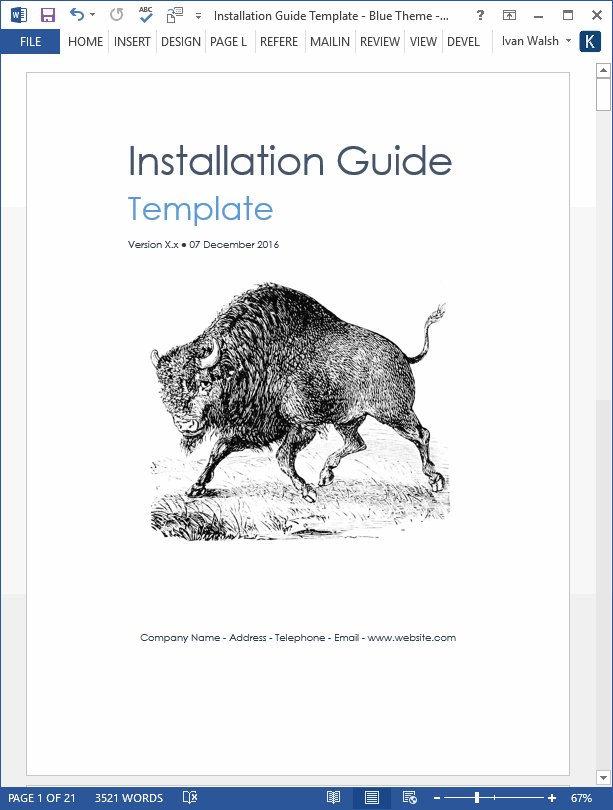User Guides
How to Write a Software Installation Guide (With Sample Guidelines + Template)
In this tutorial, we look at how to write an Installation Guide. We look at the main sections in an Installation Guide, how to write each section, and provide sample text to help you get started with your technical documents.
Instant Download – Buy Here for only $9.99!
Download: Click here to learn more about this installation guide template.
Installation Guide Template: Who uses it?
The Installation Plan provides installation and configuration procedures for every part of the system and describes the correct order for installing the component instances and performing basic configuration.
What in an Installation Guide?
An Installation Guide is a type of technical document that describes the steps required to install software, hardware, or any items that requires to be assembled, In this tutorial, we describe how to install a software product, such as a new Windows server, SAP products, or online web applications.
Who Writes the Installation Guide?
In general, an installation guide is written by a technical writer. Typically, they will work with system administrators and others involved in the installation process for technical information. For example, QA and BAs may also have input.
Installation Guide Template (MS Word)
You can use this Installation Guide template when installing software and for the preparation, training, and conversion from existing systems.
Download: Click here to learn more about this installation guide template.
Introduction
The following Installation and Configuration Guide template provides instructions for installing components on computers that are intended to support and run your product.
Describe the product
The web-based system allows lawyers to create, receive, route, review, and approve legal document online.

Download: Click here to learn more about this installation guide template.
Pre-Installation Requirements
The following prerequisites and requirements must be satisfied in order for the to install successfully.
The installer program runs checks for the software prerequisites, and if any prerequisites are missing, it lists the missing items and requests that they be installed. The installation will not proceed until all prerequisites are installed.
Database Prerequisites
Identify the server prerequisites, such as:
- SQL Server 2012 R2
IIS Requirements
Identify IIS requirements, such as:
- IIS 6 or greater
- NET 4.5 enabled
Hardware Requirements
Identify hardware requirements, such as:
Computers running must meet the following hardware requirements.
- Minimum Hardware Requirements
- Processor:
- Processor speed:
- Random access memory (RAM):
- Hard disk capacity:
- Recommended Hardware Requirements
- Processor:
- Processor speed:
- Random access memory (RAM):
- Hard disk capacity:
Software Prerequisites
Identify software prerequisites, such as:
The installation setup program runs checks for the following software prerequisites:
- Microsoft® Windows Server™ 2003
- Microsoft .NET Framework 3.0
- Microsoft SQL Server™ 2010
Other Installation Requirements
Identify other installation requirements, such as:
The following installation requirements must also be completed:
- Database – identify paths, database names and tables
- APIs – identify endpoints, paths, and other configuration items
Web Server(s)
Describe the web server configuration, for example:
- IIS 7.5
- .NET 4.5
- Windows Server 2008 R2
- Regional Settings:
- Format:
- Location:
- System Locale:
Server Components and Installer File Names
Identify the component installation files.
| Component | Installer File |
| Identity component #1 | Identify the installer file, e.g. .exe, msi. |
| Identity component #2 | Identify the installer file, e.g. .exe, msi. |
| Identity component #3 | Identify the installer file, e.g. .exe, msi. |

Download: Click here to learn more about this installation guide template.
Pre-Installation Checklist
Use the following checklist to ensure that your servers are ready for the components to be installed.
| # | Checklist Item |
| 1 | Copy [file] to the [directory].
Specify the configuration settings in the [config file.] |
| 2 | Copy [file] to the [directory].
Specify the configuration settings in the [config file.] |
| 3 | Copy [file] to the [directory].
Specify the configuration settings in the [config file.] |
Installation and Configuring Procedure
In the next section, describe the steps to install and configure the components.
To make this easier to follow, list the tasks and the steps the System Admin needed to follow:
The installation procedure contains the following steps:
| # | Checklist Item |
| 1 | Configuration pre-requisites |
| 2 | Ensure that servers meet minimum hardware requirements. |
| 3 | Ensure that software prerequisites are installed. |
| 4 | Run the installer program on the server. |
| 5 | Run the DB installer program on the server. |
| 6 | Install the database. |
| 7 | Import data |
| 8 | Configure API endpoints |
| 9 | Install Application Server |
| 10 | Install APIs |
Download: Click here to learn more about this installation guide template.
Post-Installation Tasks
In this section, we describe the post installation tasks.
After you’ve completed the installation, you want to check that everything works fine.
To ensure this, let’s create a checklist and check that everything works correctly.
Post-Installation Checklist
Use the following checklist for post-installation and configuration requirements.
| # | Checklist Item |
| 1 | Check the API endpoints are correct. |
| 2 | Check that the database tables are running. |
| 3 | Check that digital certificates are installed. |
| 4 | Check that you can access the web servers. |
| 5 | Check that security settings have been applied correctly. |
Troubleshooting
In this section, we help users fix common issues that may arise.
To do this, identify known issues, common mistakes users may make when configuring the system, and any recommended settings.
For example:
The following installation issues may occur when installing .
- Problem: Warning 123. A numeric value must be provided for the port.
- Fix: Port numbers for services must be positive numeric values and represent valid HTTP ports.
Internal Error 123.
- Problem: The cannot duplicate an existing file name and path.
- Fix: Remove the existing file name and path.

Download: Click here to learn more about this installation guide template.
Installation Plan Validation Checklists
The next step is to validate that the installation was successful.
Use the following checklist to validate that was installed successfully.
Installation Validation Checklist
Use the following validation checklist, or portions of it, to validate a successful installation of the components.
| # | Checklist Item |
| 1 | The URL should point to [endpoint].
The URL should follow the format: http://ServerName:PortName/ |
| A database named [XXX] should exist on the client computer. | |
| The database [XXX] should have the following tables: | |
| The database [XXX] should have the following users:
User 1 User 2 User 3 |
|
| The database [XXX] should have the following roles:
Role 1 Role 2 Role 3 |
Uninstall order for components
Finally, explain how to uninstall the product. You might also want to include steps to upgrade the application.
You can uninstall previous versions of using the Add/Remove Programs feature on the Control Panel.
Uninstall the components in the following order:
- Uninstall components
- Uninstall SQL Server
- Uninstall Microsoft .NET Framework 2.0
- Uninstall Visual Studio
Download: Click here to learn more about this installation guide template.



